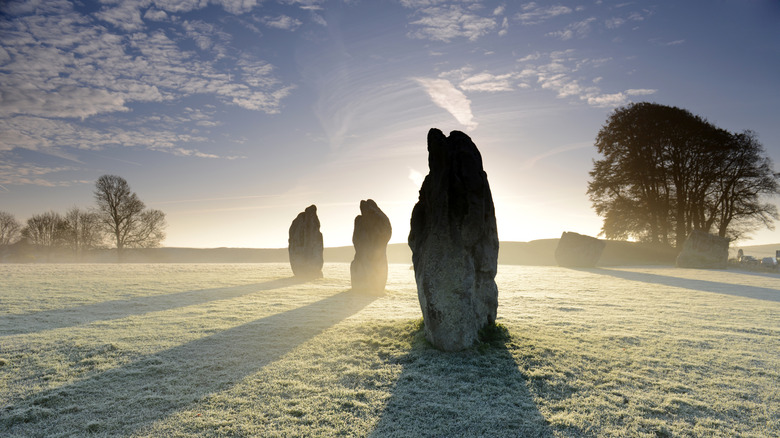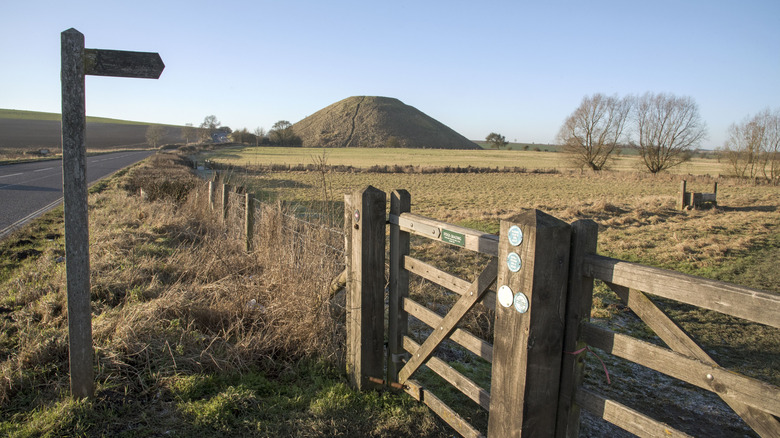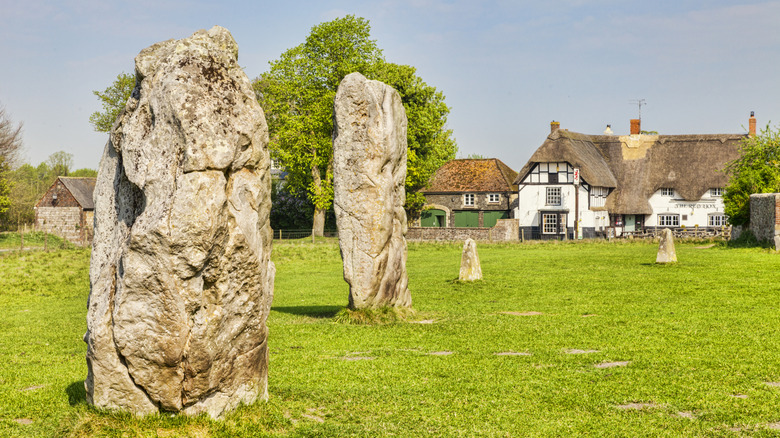Escape Stonehenge Crowds At A Charming Hidden Village With Its Own Neolithic Monument
Stonehenge is Britain's most famous Neolithic monument. These mysterious giant stones can be seen from miles away, standing silently on England's Salisbury Plain. Archeologists are still learning exactly how this prehistoric monument was used, but it was likely a place for religious gatherings possibly tied to the spring and autumn equinoxes. However, if you want to experience a mystical moment at Stonehenge, be prepared to battle the crowds, as more than 1 million people visit Stonehenge each year.
Fortunately, there are other places in the British Isles to wonder about the ancient mysteries of Stone Age peoples. Put on your wellies (i.e., waterproof boots) and go for a walk to the Avebury World Heritage Site. This cluster of Neolithic monuments is considered a part of the same heritage site as Stonehenge but far less crowded. Here, you can tread the ancient pathways that link these prehistoric sites in quiet contemplation. The structures are connected to each other, so you can easily explore the entire area and learn about its fascinating history.
Ancient mysteries still to be uncovered at the Avebury World Heritage Site
The village of Avebury lies in Wiltshire, England, about a two-hour drive west of London. You can also take a train to nearby Swindon and then a bus to Avebury. Entrance to the site is free, and unlike Stonehenge, there's no need to book tickets. It's open from dawn until dusk, and visitors can drop in whenever they want.
Avebury is a collection of neolithic sites built between 2850 and 2200 B.C. The earliest include what was once a huge enclosure surrounded by a series of ditches on Windmill Hill and West Kennet Long Barrow, an ancient burial mound. The Avebury Henge is at the center of the site. It is the largest prehistoric circular enclosure in the world, evolving over hundreds of years to become a complex of connected monuments.
Today, much of the site lies buried underground, but some remarkable earthworks are still visible. The West Kennet Avenue of 100 pairs of standing stones is particularly haunting, as is Silbury Hill, Europe's largest artificial prehistoric mound. Why these ancient monuments were built and how they were used is still a mystery. Both Stonehenge and Avebury are active archeological research sites. The nearby Alexander Keiller Museum houses the ancient artifacts that have been unearthed so far.
Waking up within a stone circle
Though the Stonehenge and Avebury World Heritage Sites are connected, they stand miles apart. It is possible to walk between the two along the Great Stones Way, a meandering 36-mile route that takes in both of these magnificent neolithic monuments. It can take several days, but hikers are rewarded with rolling green landscapes and cozy village stops along the way. While early and late summer are the best times to visit England, be ready for rain no matter what season you visit. Raincoats and comfortable water-resistant shoes are always a good idea.
If you want to spend more time in Avebury, The Red Lion claims to be the only pub in the world to stand inside an ancient henge. In addition to serving hearty food for visiting hikers, it also organizes local walks among the Avebury monuments. The Avebury Lodge also stands within a stone circle. Each of their guestrooms looks out onto the haunting landscape that surrounds it, allowing guests to wake up to a truly unique view.
To investigate more neolithic sites, Scotland's Calanais standing stones are another good option free from crowds. In Ireland, Newgrange is a neolithic site that predates Stonehenge and is equally accessible.


